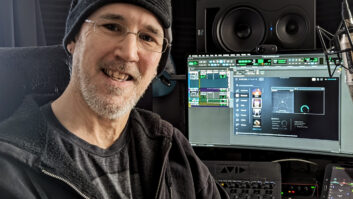Las Vegas — A single-cable solution designed to replace a variety of standard connectors on PC monitors and flat panels is about to get an update.
The Video Electronics Standards Association (VESA) introduced its DisplayPort digital technology in May 2006 primarily to provide PC manufacturers with an option to replace the DVI connector for PC monitors, the LVDS interface for flat panels and the analog VGA connector. A VESA newsletter from December explained “DisplayPort is not being positioned to compete with HDMI, but rather to complement it for PC and PC-based products.”
VESA hosted a press conference during International CES where it announced that it expects to publish in the first quarter an update on the standard in its latest Interoperability Guideline for convergence with Version 1.1 of its DisplayPort technology format. The conference featured a panel including representatives from a variety of companies that have helped to develop DisplayPort including Hewlett-Packard, Dell, Intel, Samsung Electronics, AMD, Genesis, Microchip, Lenovo, NVIDIA and Modex.
According to VESA, the specification “addresses the need for separate high-definition audio and video paths, but it does so on a single cable.” Other key benefits of the DisplayPort format are said to include: lower display costs, ease of use, higher performance, user ability to use new features like video chat over a simple cable and fewer wires. The specification is expected to make it possible to produce “direct drive monitors.”
One of the hottest topics at the conference revolved around the VESA claim that DisplayPort is not intended to compete with the HDMI format. A number of the panelists repeated the mantra when faced with a battery of questions about the similarities between the two formats from various members of the press.
HP’s Bob Myers, chairman of VESA’s board said “they are aimed at different audiences… we see the two coexisting.”
Dell’s Bruce Montag explained the need for a solution like DisplayPort saying “there are too many display interfaces today… there is a need to have a single digital interface that the entire industry can gather around.”
Intel’s Simon Ellis explained that DisplayPort allows manufacturers to implement more support for HDMI and DVI formats because they “can implement multiple protocols through a single connector.”
The conference panelists said VESA is not licensing its format but rather making it freely available to anyone who would like to develop new generations of products that comply with the standard.
Panelists were vague when responding to questions about when DisplayPort-enabled products would hit the market. The general answer was that the product would be available in the “near future” but no panelist would name specific products or manufacturers. While no product is imminent, a press release from earlier this month announced that VESA had completed its first DisplayPort plug test on Dec. 14, 2006 and that “Agilent, Tektronix and Molex led the successful initial testing of cables, transmitters and receivers that comply with the DisplayPort standard.” The release also said that Analogix, Parade and Genesis Microchip had their DisplayPort IC interoperability verified.
Dell’s Bruce Montag told TWICE that “the difference [between HDMI and Display Port] is that HDMI was designed purely as an HDTV interface.” He said that it was a “pretty limited focus” and that “the PC world needs a replacement for VGA.” Montag later added that the DVI format “is difficult to do going forward” and that the “new architecture [DisplayPort] offers new user features.”
While it appears that there are quite a few similarities with HDMI, Montag was quick to point to differences like DisplayPort’s use of a “bi-directional channel” which he says allows one cable to perform multiple functions. By way of example, he said that users could use the DisplayPort technology to perform a function like video chat with a VoIP service and the user would only need one cable to transmit data from their camera, microphone and speakers.
Montag also said that DisplayPort would make it possible for manufacturers to produce “direct drive monitors” that he said would reduce the complexity of monitor design by eliminating the need for much of the internal hardware required by HDMI. Montag says that such monitors would help to “complete the transition from CRT to LCD” for monitor manufacturers.
Montag said that in the future he expects HDMI to remain in the TV realm. When asked whether he thought there would be a conflict if media-center type PCs begin to play more of a role in the home theater, Montag answered that the “game console or living room PC would implement HDMI and DisplayPort” and would use a “simple adapter” to do both with a DisplayPort connection.
“We don’t see it as competing [with HDMI] because HDMI is almost a basic HDTV feature now,” said Montag. He said that the main goal of DisplayPort is to replace LVDS, VGA and DVI formats, although he noted that initially it is likely that PCs will be produced with both DVI and DisplayPorts that will transmit data over a DisplayPort connector. He said that “those PCs that need to connect to HDTV will also use HDMI.”
Montag said that a business PC will not feature HDMI but that a consumer PC will likely use both so that it’s compatible with both.
However, HDMI representatives were not convinced that VESA’s DisplayPort would not be competing with the HDMI interface.
While VESA and the DisplayPort developers may be maintaining their stance that they are not trying to compete with the HDMI interface, a telephone interview with HDMI Licensing’s marketing VP Steve Venuti and Joseph Lee, HDMI’s “technology evangelist,” showed that not everyone is convinced.
“DisplayPort is functionally the same technology as HDMI,” Venuti said, noting that it has “essentially the same features.” He said that DisplayPort is “a technology that absolutely can compete [with HDMI].” The only problem, he pointed out, is that there are no DisplayPort products on the market yet and HDMI is already projecting that it will have “over one billion [HDMI compatible] products on the market by 2010.”
As for claims that the two formats can work together, Joseph Lee, HDMI’s “technology evangelist” said “it’s like saying 1394 is compatible with USB.” He explained that in order for manufacturers creating DisplayPort products to make their products compatible with USB it would require them to create a “dual chip and a dongle” to make it work. Lee said that these steps would be “not easy” and “expensive.” Lee added that his biggest concern would be consumer confusion.
Lee said that since DisplayPort and HDMI are being written and revised by two different organizations, there’s a chance that the claim of DisplayPort’s compatibility with HDMI might not always be the case because of “the possibility that the HDMI spec could take a turn in the future.” He added “It’s not like [the two organizations] are walking hand-in hand which indicates a likelihood that the two could diverge in the future.”
As far as HDMI’s plans for the future, the representatives said that the licensing group is planning to increase HDMI support for the PC. They noted that HDMI Version 1.2 already included changes so that PCs could adopt HDMI. Lee said that he has regular contact with PC industry companies to “actively solicit feedback” on how HDMI could evolve to meet their needs more effectively in the future. He said that “one priority [for us] is to help the PC industry to take on multimedia formats via HDMI.”
Venuti added “clearly what we see in the future is more convergence between the PC and HDMI.” He said that he anticipated that HDMI would implement some steps towards that end at some point this year.
“DisplayPort is behind the ball,” said Venuti. He said that he sees DisplayPort as a “force fit” and that it will be a challenge for VESA to get enough manufacturers to produce enough product to support their format as the market continues to adopt HDMI.
As for the perception that VESA isn’t charging royalties for use of the DisplayPort spec, Lee said that he wouldn’t fully believe it until VESA draws up a final adopter agreement.
Lee sent TWICE a copy of the first few pages of a draft of the latest VESA DisplayPort Standard document to show that there is still the possibility of royalties related to the technology even if they don’t come directly from VESA. What this means is that the language of the VESA document states that some of the companies that have contributed to the development of the standard have agreed to license their intellectual property rights on reasonable and non-discriminatory terms — terms that are yet to be publicly defined as there is no concrete adopter agreement yet.
To be certain, the HDMI reps weren’t completely negative about DisplayPort. Lee did say that the technology would be good for replacing the LVDS internal embedded interface because of its bi-directional channel feature.













